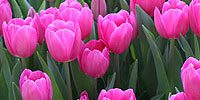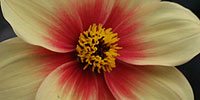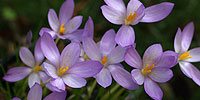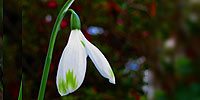Planting bulbs, corms, and tubers is one of the easiest and quickest ways to add vibrant colour to your garden. Whether in the garden border, pots, or vases, these gems can swiftly transform your outdoor space.
In Australia, we have access to an astounding variety of garden bulbs, many grown by dedicated specialists and available for purchase online.
Flowering bulbs fall into a number of categories, categorized by their flowering season, specific species or growth conditions, and even their country of origin. With many species, we include photographs to assist with identification.
- Acis
- Agapanthus
- Agapanthus Black Pantha
- Agapanthus campanulatus isis
- Agapanthus Dwarf White
- Agapanthus Silver Baby
- Agapanthus Snowball
- Albuca
- Albuca spiralis
- Allium aflatunense
- Allium karataviense
- Alliums
- Alocasia
- Alpinia zerumbet
- Alstroemeria
- Amarygia parkeri
- Amaryllis
- Amorphophallus
- Anemone blanda
- Anemone coronaria Bulbs
- Anemone flaccida
- Anemone multifida
- Anemone x lipsiensis
- Anemonella thalictroides
- Anemonopsis
- Anthriscus sylvestris
- Arisaema
- Arisaema candidissimum
- Arisaema ringens
- Arisaema sikokianum
- Aroids
- Arthropodium cirratum
- Arum Lilies
- Arum palaestinum
- Aruncus
- Asiatic Lilies
- Asphodeline
- Asphodelus
- Asphodelus acaulis
- Astelia chathamica
- Calochortus
- Canna Lilies
- Cardiocrinum Giganteum
- Chincherinchee
- Chionodoxa
- Clivia miniata
- Clivia nobilis
- Colchicum
- Colchicum autumnale
- Colocasia esculenta antiquorum
- Crinum
- Crocosmia
- Crocus
- Crocus pickwick
- Crocus sativus
- Crocus tommasinianus
- Crocus vernus
- Curcuma
- Cyclamen
- Cyclamen graecum
- Cyclamen persicum
- Cyclamen repandum
- Cyclamen rohlfsianum
- Cyrtanthus
- Cyrtanthus mackenii
- Habranthus tubispathus
- Hacquetia
- Haemanthus
- Haemanthus albiflos
- Haemanthus coccineus
- Haemanthus deformis
- Haemanthus humilis
- Hedychium
- Helianthemum
- Helianthus - The Sunflowers
- Helianthus angustifolius
- Heliotropium arborescens
- Hellebores
- Helleborus sternii
- Helleborus x ericsmithii
- Hepatica
- Herbertia platensis
- Hesperantha coccinea
- Hippeastrum
- Hollyhocks
- Hoop Petticoat Daffodils
- Hosta halcyon
- Hosta sieboldiana
- Hostas
- How to Grow Clivia Plants
- Hyacinth Bulbs
- Hymenocallis
- Impatiens
- Inula
- Ipheion uniflorum
- Iresine herbestii
- Iris Bulbs
- Iris chrysographes
- Iris ensata - The Japanese Iris
- Iris histriodes
- Iris laevigata
- Iris pallida - The Dalmatian Iris
- Iris pseudacorus
- Iris reichenbachii
- Iris reticulata
- Iris reticulata Alida
- Iris reticulata Katharine Hodgkin
- Iris unguicularis
- Iris virginica
- Iris-reticulata George
- Isoplexis
- Ixia
- Ixia viridiflora
When to Buy Bulbs
Nearly all bulbs for the garden sold online are only available during dormancy. This is for ease of postage and allows you to plant at the right time of the year. So you can plan ahead, consult our seasonal guide for flowering bulbs.
Choosing high-quality bulbs directly from reputable growers is essential for a successful garden. Avoid bulbs that feel soft, show signs of damage or disease, or emit an unpleasant odour. Start with good-quality bulbs to achieve the best results.
In addition to bulbs, our list also features rhizomatous garden plants that flower in the winter season. These selections offer a variety of options to enhance your garden.

- Allium
- Albuca
- Arisaema species
- Anemones
- Babiana
- Bellavalia
- Bloomeria
- Brimeura
- Bluebells
- Boophone
- Calochortus
- Chionodoxa – Glory of the Snow
- Crocus
- Dodecatheon
- Scilla peruviana – Squill
- Daffodils
- Dutch Iris
- Erythronium – Trout Lily
- Freesias
- Fritillaria
- Hermodactylus
- Hyacinths
- Iris
- Ixia
- Lachenalia
- Moraea
- Muscari
- Ornithogalum
- Ranunculus
- Rhodohypoxis
- Sparaxis
- Spiloxene
- Trillium
- Triteleia – Fabiola
- Tritonia
- Tulips
- Watsonia

- Achimenes
- Arum Lilies
- Arisaema species
- Begonias
- Belamcanda chinensis
- Calla Lillies – Zantedeschia
- Cyrtanthus – Vallotta Lilly
- Dahlias
- Dichelostemma
- Gladioli
- Gloriosa
- Haemanthus
- Hymenocallis
- Hippeastrum
- Liliums
- Eucomis – Pineapple Lily
- Sandersonia
- Sauromatum
- Scadoxus
- Smilacina
- Sprekelia
- Tigridia
- Tuberose

- Belladonna Lilies
- Brunsvigia
- Crocosmia
- Colchicum
- Crocus
- Cyclamen
- Dahlia
- Lycoris – Spider Lilies
- Nerines
- Saffron Crocus
- Sternbergia
- Zephranthes

- Eranthus – Winter Aconite
- Galanthus – Snowdrops
- Iris reticulata
- Leucojum – Snowflakes
- Acis autumnalis
- Jonquils
- Velthemia
Bulbs for Indoors
Many bulbs are suitable for growing indoors or at least for flowering indoors. Hippeastrum (commonly known as amaryllis) and Clivia are two top choices. Both thrive indoors in a well-lit position with filtered light. These bulbs are stunning and relatively low-maintenance, making them perfect for indoor cultivation.
Hippeastrum bulbs produce large, showy flowers that can brighten up your indoor space, especially during late winter when you need a burst of colour. They are easy to care for and can be rested outside in a shaded position when dormant.
Clivia bulbs, native to South Africa, are prized for their lush, strappy foliage and vibrant, long-lasting clusters of trumpet-shaped flowers. Clivias are slow growers and may not need repotting for several years.
Garden Bulb Planting Factors
A few things to consider when planting bulbs
- Depth – The general rule of thumb is to plant bulbs at a depth equal to three times their height. So, if a bulb is 5cm tall, dig a hole 15cm deep. Space bulbs according to their recommended spacing guidelines.
- Drainage/moisture – Keep the soil evenly moist but not waterlogged. Bulbs are susceptible to rot in waterlogged conditions.
- Sun – Most bulbs prefer full sun, but some, like spring-flowering bulbs, can tolerate partial shade.
- Soil pH – Bulbs like a neutral pH of 7.0.
If you can get these things right, you can grow and flower most garden bulbs successfully. Detailed growing instructions should come with bulbs. We also provide a guide in each species section.
Planting Garden Bulbs in the Garden or Containers
It is important when planting bulbs to select good quality bulbs directly from the grower. Bulbs should not be soft, damaged, show any sign of disease or have an unpleasant odour. Start with good-quality bulbs from reputable suppliers.
How to plant bulbs
Bulbs need to be planted at the correct time for maximum performance. Spring-flowering bulbs are typically planted in autumn while summer-flowering bulbs vary in timing. Bulbs also need to be planted the correct way up and at the correct depth. The general rule for planting spring flowering bulbs is to place them 2-3 times as deep as the bulb’s height, pointy end up. Many summer flowering bulbs have different planting depths and requirements, so if in doubt, ask for instructions.
Many flower bulbs perform well in pots, but be careful of watering requirements and also be aware that pots placed in the sun can get very hot.
After the flowering period, allow the foliage to wither naturally. The leaves help store energy for the next year’s bloom. Avoid cutting or removing them until they turn yellow and dry. You can then trim them back.
Propagating new plants from Bulbs
Bulbs are propagated by division or by using seeds. Division is easiest for beginners, while propagating bulbs by seed is better suited for the more experienced gardener. Keep in mind that some bulbs may take up to 7 years to flower from seed.
